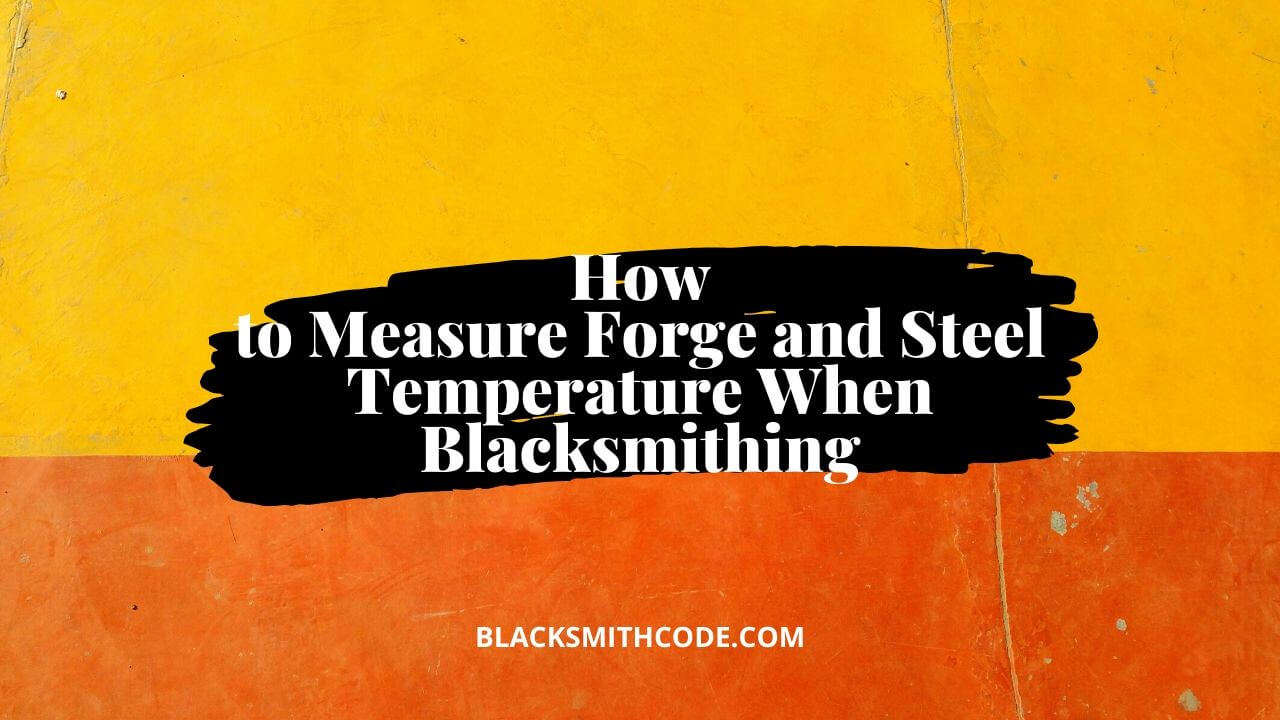Heating is an essential component of blacksmithing. There is no forging without fire. Being a blacksmith, you must have sound knowledge of temperatures and how they affect the properties of the metal.
Without a proper sense of temperature, you can destroy your valuable metal piece. If you start hammering before reaching the forging temperature, you’ll be wasting your energy and can even injure yourself.
Are you having problems with how to measure temperature of metal? Here are some of the methods of measuring the forge and steel temperatures:
By looking at it
Simple as that. Old blacksmiths relied on their eyes to guess the temperature of the metal. If you have worked with metal, you must have observed how it changes its color with the rising temperature.
It starts from a dull red color at about 1100 °F and goes up to a blazing 2400 °F with a bright white tint. If you plan on forging, the dull orange or yellow color should be observed as they indicate a temperature range of 1700 °F to 2000 °F. The steel will melt beyond 2500 °F.
Similarly, for tempering, a temperature range of 445 °F to 800 °F is required. A blue or wheat color indicates tempering.
By using modern temperature measuring instruments
It is good to have a sense of colors, but for more accurate measurements, a pyrometer or a thermocouple is to be used.
Pyrometer
Pyrometer is a remote-sensing IR thermometer that accurately measures the surface temperature without even touching it. Crazy, isn’t it? You’ll be completely safe from accidentally touching the surface of the red-hot metal piece.
Are you curious about how to measure temperature of metal with IR thermometer? It works by detecting the IR energy being released by the hot metal piece. Depending upon the application, the pyrometer is further divided into six subcategories.
The long-wavelength pyrometers are useless for blacksmiths as they can only measure up to 200 °F. The short-wavelength ones are preferable if the temperature of a metal stock inside the furnace is to be determined.
If your metal piece does not have too many surface scales, the two-color pyrometer will do the job. Dual-wavelength pyrometer can be used for a metal piece having excessive scaling and surface oxidation.
Multi-wavelength pyrometer works best for copper, bronze, zinc, aluminum, and magnesium.
Thermocouple
Ordinary pyrometers cannot be used to measure high temperatures. This is where thermocouples come in. They can even be placed inside the furnace to give you the exact temperature.
The best part? It gives you continuous readings. A K-type thermocouple (Nickel-Chromium / Nickel-Alumel) can withstand a temperature of 2300 °F and is readily available.
The other variants include J, T, E, N, S, and B type thermocouples, but they are not useful for blacksmithing.
You can attach a PID-controller for real-time temperature monitoring. If the temperature of the forge is controlled, it would be much easier for you to heat the metal stock without worrying about heat fluctuations.
Conclusion
Are you still having troubles with how to measure temperature of metal? The easiest way of knowing the temperature is by observing the color of the metal being heated. The advanced techniques tools like pyrometer and thermocouples can give you more accurate measurements.
It is essential to work at a suitable temperature to maximize the durability and longevity of the metal.

